.
History Grumm![]() an Aerospace
an Aerospace
Grumman E-1 Tracer

The Grumman E-1 Tracer (WF prior to 1962) was the first purpose-built airborne early warning aircraft used by the United States Navy. It was a derivative of the Grumman C-1 Trader and entered service in 1958. It was replaced by the more modern Grumman E-2 Hawkeye by the 1970s.
The E-1 was designated WF under the 1922 United States Navy aircraft designation system; the designation earned it the nickname "Willy Fudd". The Tracer was derived from the C-1 Trader, itself a derivative of the S-2 Tracker carrier-based antisubmarine aircraft, known as S2F under the old system, nicknamed "Stoof", leading to the WF/E-1, with its distinctive radome, being known as "Stoof with a Roof."[1] The E-1 featured folding wings of a very particular design for compact storage aboard aircraft carriers; unlike the S-2 and C-1 in which the wings folded upwards, the radome atop the fuselage required the E-1's designers to re-adopt an updated version of the Grumman-patented "Sto-Wing" folding wing system, pioneered on their earlier Grumman F4F-4 Wildcat piston-engined fighter[2][3] of the early-WW II period, to fold its wings aftwards along the sides of the fuselage
The Tracer was fitted with the Hazeltine AN/APS-82 in its radome and fuselage. The radar featured an Airborne Moving Target Indicator, which compares the video of one pulse time to the next in reflected radar energy to distinguish a flying aircraft from the clutter produced by wave action at the ocean's surface. The energy reflected from an aircraft changes position rapidly compared to the energy reflected from the surrounding sea. Separating a moving object from stationary background is accomplished by suitable hardware.0
KmCeiling
0
mRange
0
Km/HAircraft Speed
0
Max Crew
Photo Gallery
Grumman E-1 Tracer


Grumman Aerospace Corporation
Grumman E-1 Tracer
General characteristics
- Crew: 4 (2 flight crew with 2 radar/intercept controllers)
- Length: 45 ft 4 in (13.82 m)
- Wingspan: 72 ft 4 in (22.05 m)
- Height: 16 ft 10 in (5.13 m)
- Wing area: 506 sq ft (47.0 m2)
- Airfoil: root: NACA 63A420; tip: NACA 63A415
-
Powerplant
- Empty weight: 20,638 lb (9,361 kg)
- Gross weight: 24,800 lb (11,249 kg)
- Max takeoff weight: (12,066 kg)
- Powerplant: 2 × Wright R-1820-82A Cyclone 9-cylinder air-cooled radial piston engines, 1,525 hp (1,137 kW) each for take-off
- Propellers: 3-bladed constant-speed reversible propellers
Specifications
- Maximum speed: 238 mph (383 km/h, 207 kn) at 4,000 ft (1,219 m)
- Cruise speed: 163 mph (262 km/h,
- Range: 1,035 mi (1,666 km, 899 nmi)
- Endurance: 6 hours 50 minutes
- Service ceiling: 15,800 ft (4,800 m)
- Rate of climb: 1,120 ft/min (5.7 m/s)
Related development
-
- Grumman C-1 Trader
- Grumman S-2 Tracker
-
Aircraft of comparable role, configuration, and era
-
Links to Youtube & Others
By May 1973, most E-1Bs were retired, with only four VAW-121 Tracers based at NAS Norfolk, Virginia, still in service. These aircraft were soon retired during mid-summer 1977 following a final cruise on board USS Franklin D. Roosevelt and were ferried to the Davis-Monthan storage facility. The E-1B Tracer was struck from the inventory by 1977.
Grumman E-1 Tracer
As one of the first carrier based early warning aircraft, the E-1 Tracer served from 1958 to 1977.
Youtube Link
Another 11 E-1 Tracers are in storage at United Aeronautical, an aircraft surplus yard located just outside Davis–Monthan Air Force Base in Tucson, Arizona.

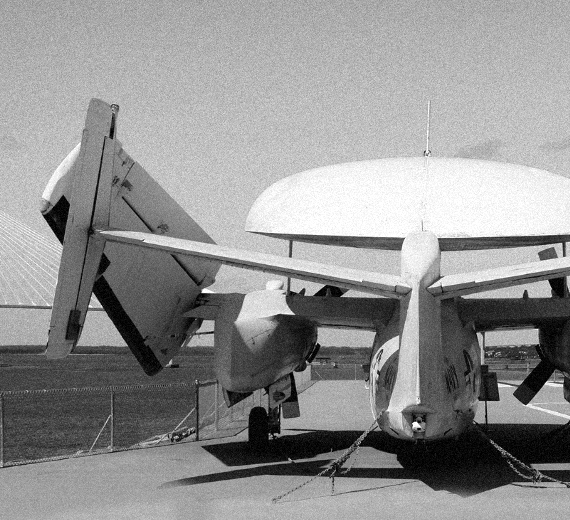

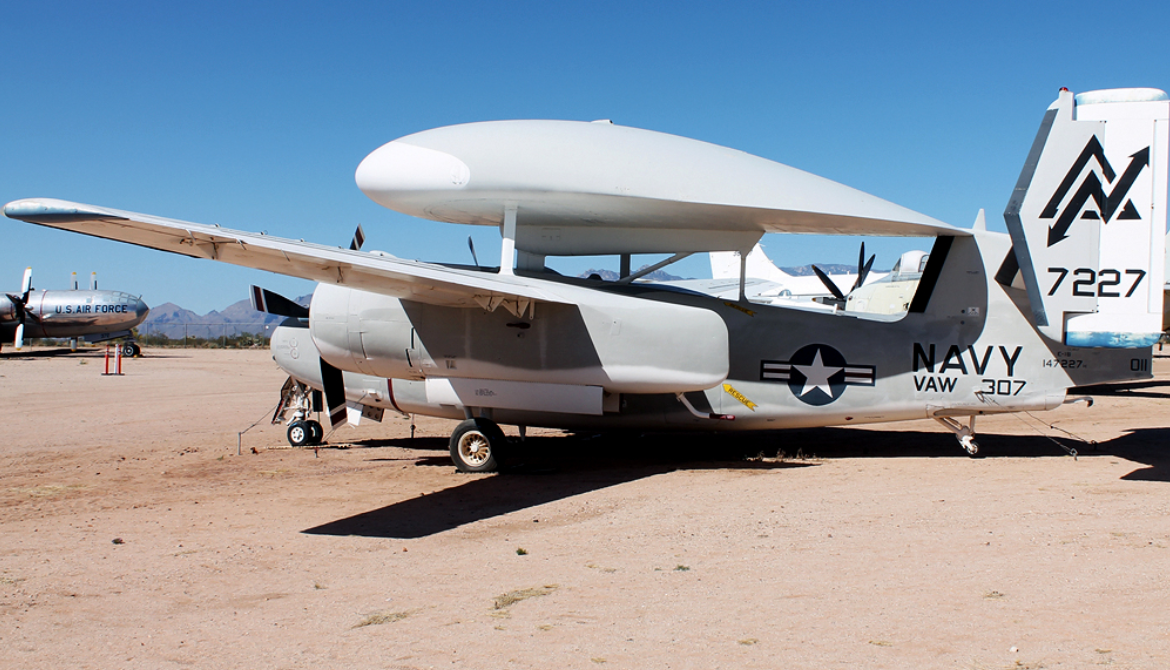
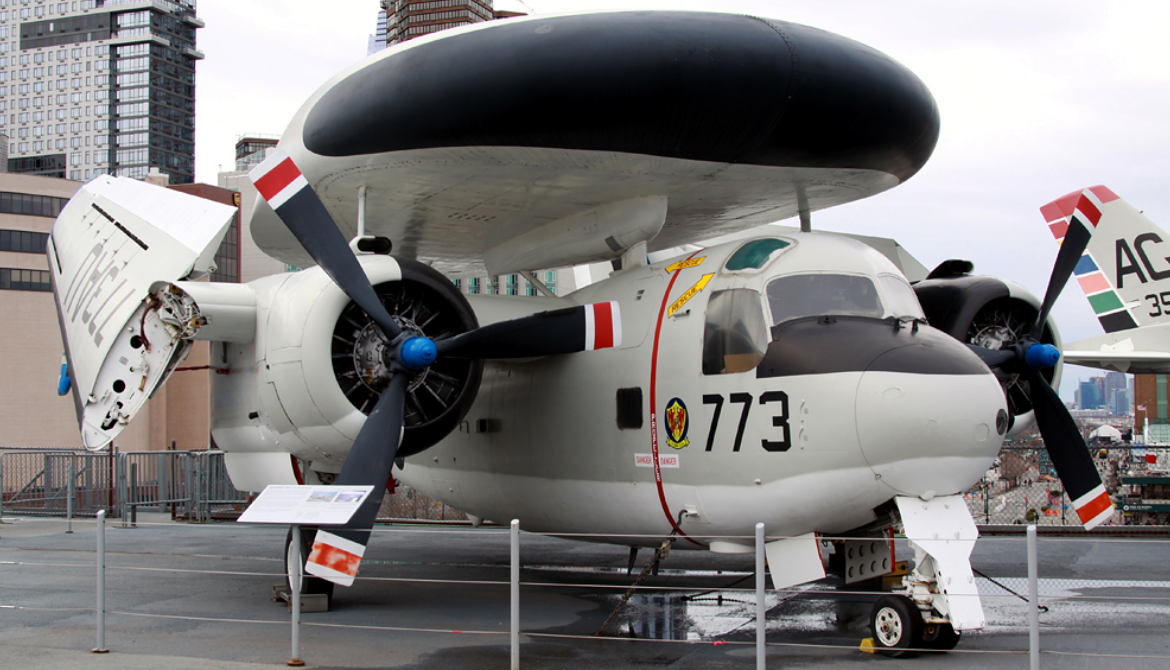
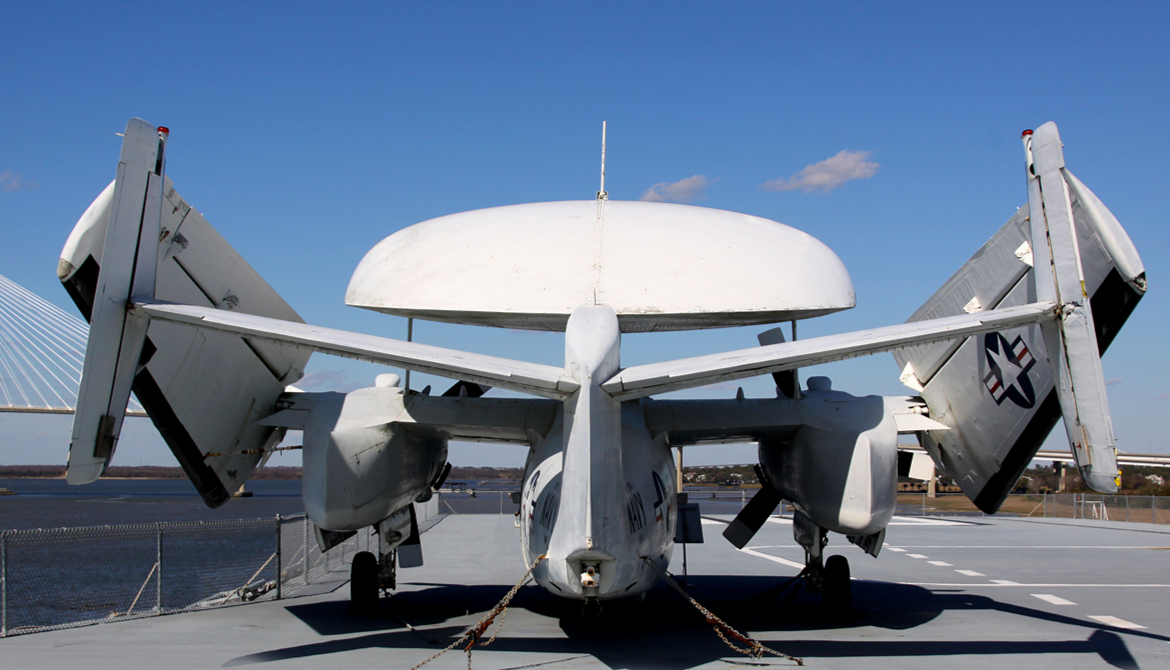

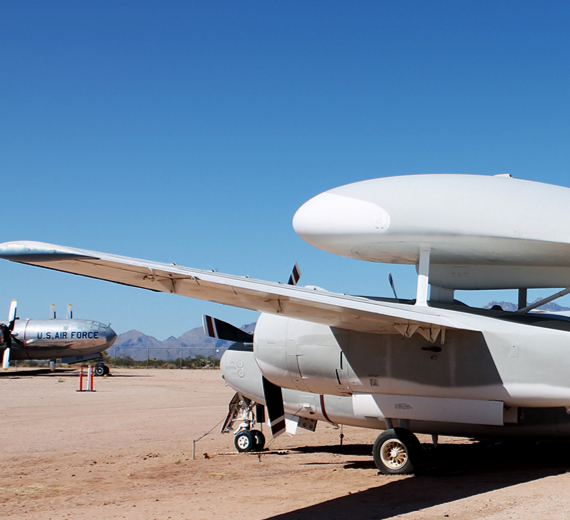
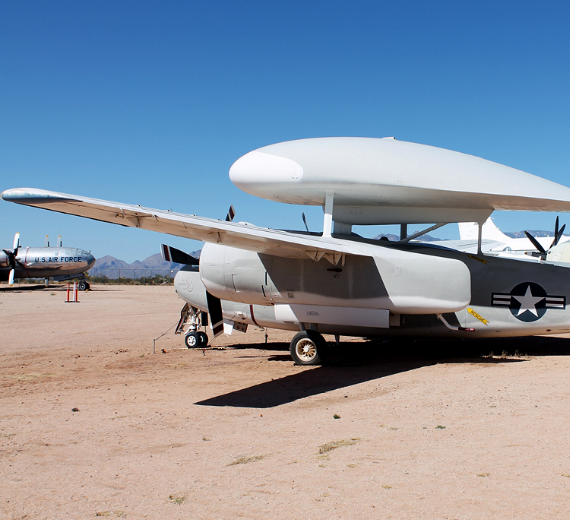
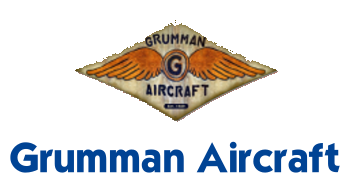
.png)


.svg.png)